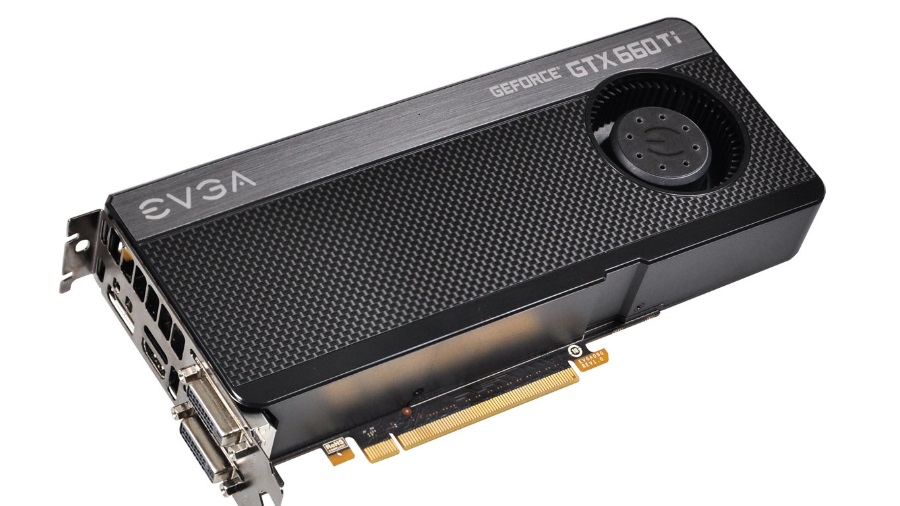Why you can trust TechRadar
Ever since the launch of the mighty GTX 680 Kepler core we knew a toned-down version was waiting in the wings, and while the GTX 670 is surely a fantastic graphics card the price was still a bit out of reach for some folks.
With the GTX 660Ti, Nvidia delivered a card aimed exactly at that mainstream crowd that wants the latest technology without having to take out a second mortgage on their house to get it. They will be very happy with this card, as the GTX 660Ti hits all the right notes in terms of price, performance and power consumption.
Again, this is all very familiar because when the GTX 680 came out we wondered aloud why anyone would bother with a GTX 680 given how close the GTX 670 was to it in specs and performance. Now we're left to wonder the same thing in regards to the GTX 660Ti and the GTX 670 - they are close enough that with a bit of over clocking it'd be easy to achieve a very similar level of performance. The cards are so close we have to wonder why Nvidia didn't sit on the GTX 660Ti for just a bit longer to give the GTX a little more breathing room.
We're excited to see Nvidia take a relatively cautious approach when it comes to declawing its previously released cards to hit a lower price point, and when you look at the benchmark performance it falls right in line with the small changes Nvidia has made.
They are not drastic reductions in areas of core functionality and the numbers bear that out - just around 10 frames per second difference between this card and the GTX 670, and that makes the GTX 660Ti very well positioned as the price-to-performance leader for the time being. And don't forget since the GTX 660Ti is built a tad conservatively there's still some headroom for overclocking, and EVGA includes a tool called Precision-X to do just that.
It lets you increase clock speeds, voltages, fan speeds and more all by just sliding several dials back and forth. You can even set up custom profiles if you want different overclocking and cooling settings for different games, and switching between profiles is as easy as clicking your mouse button.
We've already seen the GTX 680 attack the Radeon HD 7970, and that was followed up by the GTX 670 doing damage to the HD 7950, so now the GTX 660Ti gets its turn to wallop all over the HD 7870. If you are looking for the fastest card at any given price point right now, it's safe to say you're cash will be spent on an Nvidia product. Whether or not the GTX 660Ti is the right card for you depends largely on what you're currently running, but we'd have no problems recommending it over the GTX 670 if you were contemplating an upgrade and only had a few hundred bucks to spare. If you currently own a GTX 560Ti, the upgrade is a bit more difficult to justify as the performance delta is visible but such a move would only allow you to bump up your settings or resolution one or two notches. If you are running a 4-series Nvidia GPU or older however, then this upgrade path is highly recommended.
Sign up for breaking news, reviews, opinion, top tech deals, and more.
We liked
With graphics cards it all comes down to performance, so when judged in that regard the GTX 660Ti fares extremely well with today's games at super high resolution, no doubt. The card comes extremely close to the GTX 670, and soundly beats the Radeon HD 7870 as well, making it a winner as far as we can see. Not only is it fast and quiet, but it consumes very little power compared to cards from previous generations so you don't need a beast of a power supply to run it in your system. It really does have everything we love about the Kepler architecture in an affordable package.
We disliked
Yep, there's not much to dislike here, especially since in our review of the GTX 670 we griped about the high cost of that card, so now that the price has gone down we're happy to have that complaint resolved. We can say definitively that we are miffed that the box doesn't include an SLI adapter, but then again EVGA doesn't include those even with the GTX 680 cards. We can say we had hoped for a bit more of a performance delta between the GTX 660Ti and the previous generation GTX 560Ti. It's definitely faster but that is a lot of money to spend on a relatively minor upgrade. If you're still rocking a 4-series card this upgrade makes a lot of sense, but owners of 5-series Fermi cards will probably only upgrade if there is $300 burning a hole in their pocket.
